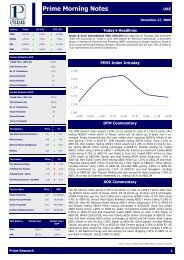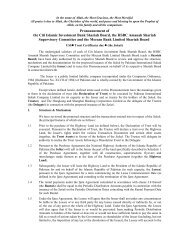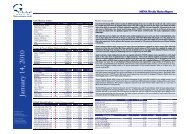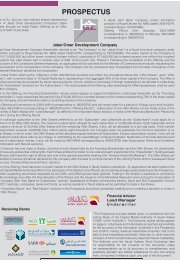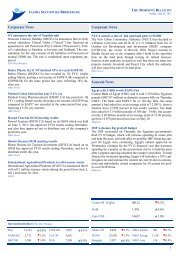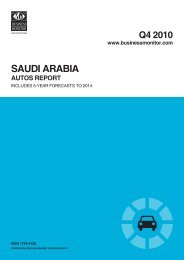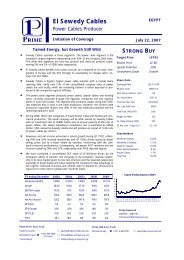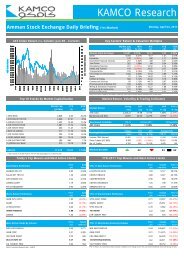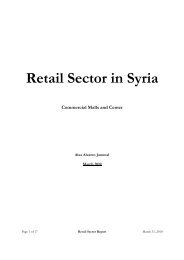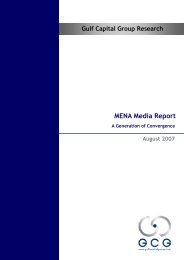Create successful ePaper yourself
Turn your PDF publications into a flip-book with our unique Google optimized e-Paper software.
8 Libya<br />
Inflation<br />
Exchange rates<br />
External sector<br />
private-sector participation. Moves to raise the proportion of locals in the<br />
workforce could stimulate greater private consumption, and strong growth in<br />
bank lending to the private sector could help to kick-start private-sector<br />
economic activity. However, these factors are not yet having a major impact on<br />
overall economic growth.<br />
After years of negative or low inflation, consumer prices picked up sharply in<br />
2007-08 but fell again in 2009, mainly because of lower international food<br />
prices—food is the dominant component of consumer price inflation. Inflation<br />
is forecast to pick up to an annual average of 3.9% in 2010-11, as consumer<br />
confidence returns and higher oil revenue increases domestic liquidity, but it<br />
will not reach the highs of 2008, as the government maintains subsidies and<br />
increases in international food prices are less dramatic. We have revised up our<br />
forecast for inflation as poor grain harvests around the world, particularly in<br />
Russia, are likely to lead to higher international food prices than previously<br />
expected. A stronger euro against the Libyan dinar could also add to<br />
inflationary pressure in 2010-11.<br />
The dinar is pegged to the SDR and is managed through tight official controls.<br />
The country's huge stocks of foreign reserves—US$97bn in March 2010—mean<br />
that the authorities will be able to defend the exchange-rate regime should any<br />
pressure on the currency arise over the forecast period. We expect the SDR to<br />
depreciate against the US dollar in 2010-11, mainly owing to a depreciation of<br />
the euro, which is a component of the SDR. The dinar is therefore forecast to<br />
depreciate to an average of LD1.28:US$1 in 2010 and LD1.33:US$1 in 2011.<br />
The current account is dominated by hydrocarbons exports. Earnings from<br />
goods exports are expected to grow to an average of US$47bn in 2010-11, from<br />
US$37bn in 2009, owing to higher oil prices and production increases. Goods<br />
imports will rise to an annual average of US$25bn in 2010-11, lifted by demand<br />
for inputs for government development projects. Consequently, we forecast that<br />
the trade surplus will average US$22bn in 2010-11.<br />
The most important element of the services account is oil-sector payments<br />
abroad, which are expected to stagnate in line with development of the sector.<br />
We therefore expect the services deficit to remain steady at an average of<br />
US$4.4bn in 2010-11. The income surplus is forecast to increase owing to growth<br />
in dividends from Libya's rapidly expanding investments abroad and low<br />
growth in profit repatriation by foreign oil companies. The current-account<br />
surplus is therefore expected to widen to an average of US$17bn (22% of GDP)<br />
in 2010-11.<br />
<strong>Country</strong> <strong>Report</strong> August 2010 www.eiu.com © The Economist Intelligence Unit Limited 2010




